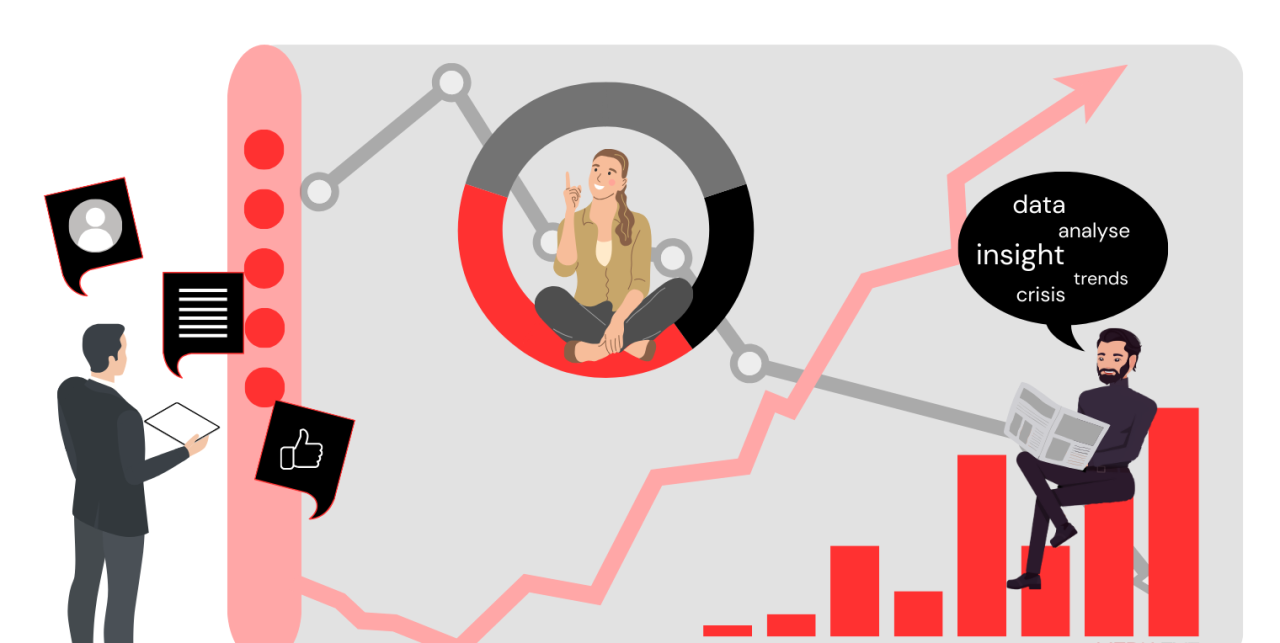Media monitoring and analysis have become indispensable tools for businesses, organizations, and individuals alike. In an age where information is abundant and constantly evolving, staying informed about what the media says about you, your competitors and your industry is crucial for making informed decisions and maintaining a positive reputation.
Introduction to Media Monitoring and Analysis

Media monitoring refers to tracking various media sources, including traditional outlets like newspapers, magazines, and television, and digital platforms such as websites, blogs, and social media channels. It involves keeping tabs on mentions of specific keywords, phrases, or topics relevant to a particular entity or subject matter.
Importance of Media Monitoring
In today’s interconnected world, where news travels fast and public opinions can make or break a brand, media monitoring plays a pivotal role in reputation management, crisis communication, and market intelligence. By monitoring media coverage, organizations can gain valuable insights into public perception, identify emerging trends, and anticipate potential issues before they escalate.
Media Monitoring Tools
1. Automated Monitoring Tools
Several automated tools are available to streamline the media monitoring process. These tools use advanced algorithms to scan millions of sources in real time, allowing users to track mentions, analyze sentiment, and monitor trends effortlessly.
2. Manual Monitoring Techniques
In addition to automated tools, manual monitoring techniques such as keyword searches, Google Alerts, and social media listening can provide more nuanced insights into specific topics or conversations. While less scalable than automated solutions, manual techniques allow for greater customization and context.
Media Analysis: Understanding the Data
Media analysis involves extracting meaning from the vast amount of data collected through monitoring efforts. By employing techniques such as sentiment analysis, trend analysis, and competitor analysis, organizations can gain deeper insights into audience perceptions, market dynamics, and competitive landscapes.
1. Sentiment Analysis
Sentiment analysis helps gauge the tone and context of media mentions, categorizing them as positive, negative, or neutral. By understanding sentiment trends over time, organizations can identify patterns and sentiment drivers, enabling more targeted messaging and response strategies.
2. Trend Analysis
Trend analysis involves identifying patterns and shifts in media coverage over time. By tracking mentions, topics, and keywords, organizations can identify emerging trends, monitor industry developments, and capitalize on opportunities.
3. Competitor Analysis
Competitor analysis allows organizations to benchmark their media presence against competitors and industry peers. By monitoring competitor mentions, analyzing the share of voice, and identifying areas of strength and weakness, organizations can refine their strategies and stay ahead of the competition.
Benefits of Media Analysis
The benefits of media analysis extend beyond reputation management and crisis response. By leveraging insights gleaned from media monitoring and analysis, organizations can:
- Enhance brand perception and credibility
- Identify new market opportunities
- Mitigate risks and anticipate challenges
- Inform strategic decision-making and resource allocation
Challenges
While media monitoring and analysis offer numerous benefits, they also present challenges that organizations must navigate effectively.
1. Data Overload
With the proliferation of media channels and the exponential growth of digital content, organizations risk being overwhelmed by the sheer volume of data available. Managing and prioritizing relevant information is essential to avoid information overload and focus on actionable insights.
2. Accuracy and Reliability
Ensuring the accuracy and reliability of media monitoring data is paramount. Misinterpretation of data or reliance on inaccurate information can lead to flawed analysis and misguided decision-making.
3. Real-time Monitoring
In today’s 24/7 news cycle, real-time monitoring is critical for staying ahead of emerging trends and responding promptly to breaking news and developments. However, maintaining vigilance around the clock can strain resources and require robust monitoring infrastructure.
Strategies for Effective Media Monitoring and Analysis
To overcome these challenges and maximize the value of media monitoring and analysis, organizations can adopt the following strategies:
- Define Clear Objectives: Clearly define the goals and objectives of media monitoring and analysis initiatives to ensure alignment with broader business objectives.
- Choose the Right Tools: Select media monitoring tools and platforms that align with organizational needs, budget constraints, and technical requirements.
- Establish Key Metrics: Identify key performance indicators (KPIs) and metrics to measure the effectiveness of media monitoring efforts and track progress over time.
- Monitor Consistently: Maintain regular monitoring cadence to capture relevant insights, track changes in sentiment and trends, and adapt strategies accordingly.
Future Trends
As technology continues to evolve and media landscapes evolve, the future of media monitoring and analysis holds exciting possibilities. From advances in artificial intelligence and machine learning to the rise of immersive technologies and predictive analytics, organizations can expect new tools and capabilities to enhance their monitoring and analysis capabilities.
Conclusion
In conclusion, media monitoring and analysis are essential components of modern-day communication and strategic decision-making. By leveraging the right tools, techniques, and strategies, organizations can unlock valuable insights, mitigate risks, and capitalize on opportunities in an increasingly complex and interconnected media landscape.
To experience the power of advanced media monitoring and analysis firsthand, we invite you to request a demo from AIM Technologies. Discover how our innovative solutions can help you gain actionable insights, enhance brand perception, and stay ahead of the competition.
FAQs
What are the benefits of media monitoring for small businesses?
- Media monitoring helps small businesses track their online presence, monitor customer feedback, and stay informed about industry trends and competitors.
How often should organizations conduct media analysis?
- The frequency of media analysis depends on organizational goals, industry dynamics, and the nature of media coverage. While some organizations may benefit from real-time monitoring, others may opt for periodic assessments.
What role does sentiment analysis play in media monitoring?
- Sentiment analysis helps organizations gauge public sentiment towards their brand, products, or services, allowing them to tailor their messaging and response strategies accordingly.
Can media monitoring tools integrate with other business systems?
- Many media monitoring tools offer integration capabilities with CRM systems, social media platforms, and analytics tools, enabling seamless data sharing and analysis across multiple channels.
How can organizations measure the ROI of media monitoring and analysis?
- Organizations can measure the ROI of media monitoring and analysis by tracking key performance indicators such as brand sentiment, share of voice, website traffic, and customer engagement metrics.


